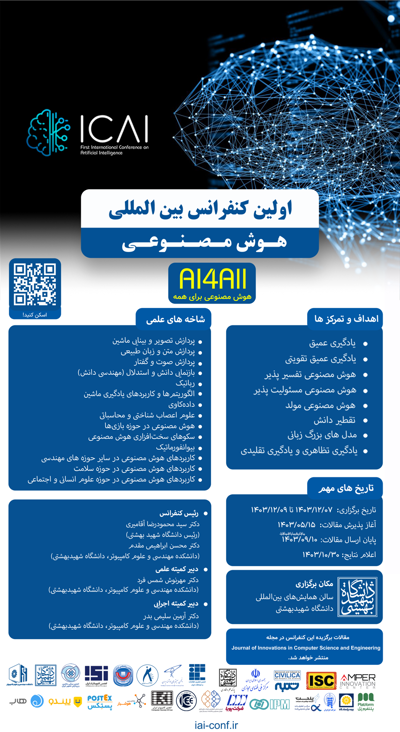0% Complete

نویسندگان :
کلمات کلیدی :
چکیده :
لیست مقالات بایگانی شده
Mohammad Amin Lotfi - Kimiya ٍEghbal - Fateneh Zareayan Jahromy
Maryam Moradi - Sima Emadi
Maryam Tamimi - Hamid Mahdavi
Sajjad Hashemian Meymandi - Mohammad Saeed Arvenaghi
Ali Heirani-Tabas - Pegah Nejat - Mehrnoosh Shamsfard - Sina Mahmudian
Seyyed Mohammad Ali Ardehali - Amin Faraji - Monireh Abdoos - Armin Salimi-Badr
Seyyed Ali Zendehbad - Farinaz Azari - Hadi Dehbovid
Ahmad Nasrollahpour - Mohammad Khanabadi Borchalouei - Toktam Khatibi
Sajedeh Farahbod - Masoud Tohidfar
Ramin Feizi - Parham Soufizadeh - Kaveh Yazdifard

